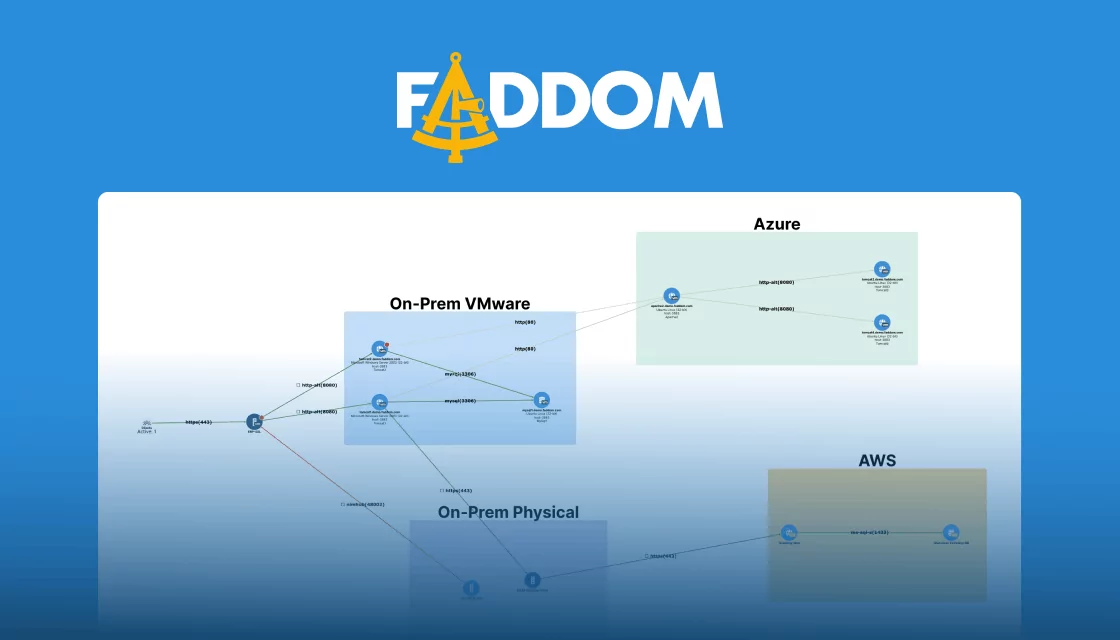What Is Application Portfolio Management?
Application Portfolio Management (APM) is a framework for managing applications in an organization. It involves understanding, managing, and strategizing the software applications in a company’s portfolio. By doing so, it ensures that the company’s applications are providing value, are cost-effective, and align with the business’s overall strategy.
APM goes beyond tracking what applications you have, providing an understanding of how those applications are used, how they contribute to your business, and how they can be optimized or replaced if necessary. It’s a holistic view of all your software assets, taking into consideration factors such as cost, usage, business value, and lifecycle.
Application portfolio management metrics are crucial in this process, providing a quantifiable measure of an application’s value, cost, risk, and performance. They help organizations make informed decisions about their application portfolio, such as which applications to invest in, which to retire, and which to replace or upgrade.
Table of Contents
Toggle- What Is Application Portfolio Management?
- Benefits of Application Portfolio Management
- 7 Steps of the Application Portfolio Management Process
- Tips from the Expert
- Examples and Use Cases of Application Portfolio Management
- Key Features of Application Portfolio Management Platforms
- Application Portfolio Management Best Practices
- Boost Your Application Portfolio Management with Faddom
This is part of an extensive series of guides about application security
Benefits of Application Portfolio Management
Managing your application portfolio is important for several reasons.
Improve Visibility and Control Across Hybrid Cloud Environments
APM offers increased visibility and control over your IT environment. As businesses grow and evolve, they often find themselves with a mix of on-premises, cloud, and hybrid applications. Managing these diverse environments can be a challenge. With APM, you gain a clear view of all your applications, regardless of where they are located.
In addition to helping you understand your current application landscape, this increased visibility also provides valuable insights for future planning. With a clear view of your applications, you can more accurately plan for future growth and changes, ensuring that your IT environment scales effectively with your business.
Optimize Costs and Resources
With the move to cloud and hybrid environments, many businesses are struggling with managing costs and resources effectively. APM provides a clear understanding of your on-premise and cloud application usage, allowing you to identify areas where resources can be optimized.
Learn more in our detailed guide to application rationalization
For example, you may find that certain applications are underutilized, leading to unnecessary costs. With APM, you can identify these applications and take action by reallocating resources, renegotiating contracts, or retiring the application.
Reduce IT Complexity and Improve Efficiency
As businesses grow and evolve, their IT environments often become increasingly complex. This complexity can lead to inefficiencies, increased costs, and reduced agility. APM helps keep track of your application landscape, allowing you to identify areas of complexity and take steps to simplify. This might involve retiring redundant applications, consolidating similar applications, or investing in more efficient solutions.
By reducing complexity, you create a more streamlined IT environment, letting the IT team focus on strategic initiatives, rather than getting bogged down in managing a complex application landscape.
Mitigate Security and Compliance Vulnerabilities
By having a full inventory of your applications and an understanding of their usage and lifecycle, you can more easily identify potential security risks. For example, outdated applications or those no longer in use can pose significant security risks. With APM, you can identify these applications and take appropriate action, whether that’s updating, replacing, or retiring the application.
Similarly, compliance can be a major challenge for businesses, particularly those in heavily regulated industries. By understanding your application portfolio, you can ensure that all applications are compliant with relevant regulations. Another aspect of APM is license compliance, which ensures that you have the appropriate licenses for all applications within the organization.
Want to learn more? Read our complete guide about Application Dependency Mapping
7 Steps of the Application Portfolio Management Process
Here are the key steps required to set up an application portfolio and APM process:
- Compile an application inventory: Compiling the application inventory involves identifying all the applications in your organization, regardless of where they are located or how they are used. This inventory should include information such as the application’s name, description, location, owner, cost, usage, and business value.
- Map application dependencies: Identifying and documenting the relationships and interactions between applications within an organization’s IT environment. This mapping provides insights into how applications support business processes and rely on each other for data, functionality, or services.
Tip: Faddom can help you map your application portfolio in minutes. Learn more or get a free trial using the form to the right.
- Identify business owners: Business owners are the people who are responsible for the application’s performance and value to the business. Identifying the business owners is important because it provides accountability and ensures that there is a clear point of contact for each application.
- Define application life cycles: This involves understanding the stages that each application goes through, from inception to retirement. Having clearly defined application life cycles can help you manage your applications more effectively, as you can plan for each stage and ensure that the application is providing value throughout its lifetime.
- Assess application usage: This involves understanding how each application is used, who uses it, and when it is used. This can help identify underutilized applications, applications that are not being used effectively, and applications that are no longer needed.
- Establish application business value: This step involves identifying direct benefits of each application (such as increased revenue or reduced costs) and indirect benefits (such as improved customer satisfaction or increased employee productivity).
- Rationalize applications: This final stage involves systematically reviewing and assessing the application portfolio to determine which applications should be kept, replaced, retired, or consolidated.

Lanir specializes in founding new tech companies for Enterprise Software: Assemble and nurture a great team, Early stage funding to growth late stage, One design partner to hundreds of enterprise customers, MVP to Enterprise grade product, Low level kernel engineering to AI/ML and BigData, One advisory board to a long list of shareholders and board members of the worlds largest VCs
Tips from the Expert
In my experience, here are tips that can help you implement and optimize Application Portfolio Management (APM):
-
Create application health scoring
Develop a scoring model that evaluates each application’s health based on criteria like stability, usage, and business value. This scoring helps prioritize decisions around maintenance, upgrades, and retirements.
-
Use automated discovery tools
Employ automated tools for continuous discovery and updates to your application inventory. This real-time data helps ensure that your APM insights are accurate and complete, especially in dynamic environments.
-
Categorize applications by business criticality
Group applications by their importance to core business functions. This helps ensure that high-impact applications receive more resources and oversight compared to less critical systems.
-
Implement cost analysis by usage
Monitor application costs relative to their usage and business impact. Use this data to pinpoint underutilized apps where you could reduce licensing or reallocate resources to higher-priority applications.
-
Conduct regular stakeholder reviews
Schedule quarterly reviews with application stakeholders to reassess each app’s relevance and performance. Frequent reviews align APM with changing business needs and ensure applications continue providing value.
Examples and Use Cases of Application Portfolio Management
Here are some examples of how APM can be used to improve your business’s performance.
Aligning Applications to Business and IT Goals
Aligning applications to business and IT goals involves ensuring that every software application in an organization’s portfolio supports its strategic objectives. This can help maximize the return on investment (ROI) of each application and ensure that IT resources are used efficiently.
For businesses, this means applications must not only meet current operational needs but also be adaptable to evolving business needs. This can be achieved by regularly reviewing the application portfolio, identifying any gaps where current applications do not support strategic objectives, and finding opportunities for improving existing applications or developing new applications.
Application Rationalization
Rationalization is the process of identifying, evaluating, and deciding the fate of applications based on their value, cost, risk, and alignment with business objectives. It is important for cutting project costs and maximizing business value across the application portfolio.
APM platforms and the metrics they measure offer an informed basis for these decisions. They provide detailed insights into each application, such as its usage, performance, cost, and business impact. This helps you make rational decisions about maintaining, updating, retiring, or replacing applications.
Identifying Application Gaps
This process involves analyzing the existing application portfolio to pinpoint areas where the organization lacks the necessary tools or systems to meet its business requirements efficiently. Gaps can manifest as missing functionalities that hinder productivity, opportunities for automation that are not being leveraged, or areas where data integration is lacking, leading to silos and inefficiencies.
Addressing these gaps may involve investing in new technologies, developing custom solutions, or reconfiguring existing applications to better align with business needs. Identifying and addressing application gaps helps organizations optimize their processes, improve decision-making, and maintain a competitive edge.
Managing Application Lifecycles and Roadmaps
A core part of APM is overseeing an application from its initial inception through to its retirement. This ensures applications remain effective, secure, and aligned with business needs throughout their operational life. It includes planning for regular updates, migrations, and eventually phasing out applications that no longer provide value or pose security risks.
A lifecycle management strategy helps organizations avoid the pitfalls of technical debt, ensuring that applications evolve in sync with changing technology landscapes and business requirements. Roadmapping provides a strategic overview of where the application portfolio is heading. It outlines future projects, upgrades, and replacements. These processes enable proactive planning, budgeting, and implementation of IT initiatives.
Managing Technical Debt
Technical debt refers to the cost of additional rework caused by choosing the quick and easy solution instead of using a better approach that would take longer. APM helps identify applications that are causing technical debt.
By monitoring the application portfolio management metrics, you can determine which applications are outdated, less efficient, or problematic, leading to increased technical debt. This identification is the first step towards managing and reducing technical debt.
Once you identify the problematic applications, APM guides you in deciding whether to update, replace, or retire these applications. This decision is based on various factors like the cost of maintenance, the impact on business operations, and the availability of better alternatives.
Shadow IT Discovery
Shadow IT refers to IT systems and solutions built and used within organizations without explicit organizational approval. It’s often a result of employees’ attempts to improve their productivity by using software applications, tools, or systems not provided by the IT department. While it may bring some immediate benefits, shadow IT can cause serious issues like security risks and compliance violations.
APM plays a crucial role in discovering and managing shadow IT. It provides visibility into all the applications used across the organization, including those not approved by the IT department. This visibility allows you to take the necessary steps to manage shadow IT, such as incorporating the beneficial tools into the official IT portfolio and restricting the harmful or unnecessary ones.
Key Features of Application Portfolio Management Platforms
An effective application portfolio management solution should offer the following capabilities.
Collection and Tracking of Application Metrics
APM metrics provide a rational and data-driven basis for evaluating and comparing applications, which is essential for making informed decisions. For instance, APM tools can track metrics like the cost of each application, its usage, performance, business impact, and more.
These metrics allow you to understand the value and efficiency of each application, and compare it with others. This helps guide you in identifying the beneficial, problematic, and redundant applications, and deciding what to do with them.
Complete Inventory of the Application Landscape
APM tools can create an inventory that includes all the applications in use, their details, and their status. This inventory provides a clear picture of the current application landscape. It reveals the diversity, complexity, and challenges of the portfolio.
An application inventory also helps identify the gaps, overlaps, and opportunities in the portfolio. This is important for cutting costs and improving efficiency, but it also makes it easier to communicate issues, providing a record of the overall state of your applications.
Gathering Evidence About Application Performance
APM tools offer evidence to the IT teams, stakeholders, and management about the relative value, utility, and costs of the applications and services. This evidence is crucial for making informed decisions, gaining support, and demonstrating the value of IT.
For example, APM tools can demonstrate the cost-effectiveness of each application, showing how much value each application delivers compared to its cost. This evidence can convince the management to invest in beneficial applications, reconsider costly ones, and retire redundant ones.
Identifying Business Needs and Risks of Business Owners
APM tools help the IT teams to illustrate business needs or risks of specific business owners. They provide insights into how each department or group is using applications, what benefits they’re getting, and what challenges they’re facing. These insights can highlight the needs or risks that need attention.
For instance, APM can reveal that a department is heavily dependent on an outdated application. This dependency is a risk as the application may become unsupported, unreliable, or incompatible with other systems. APM can also reveal that a department is lacking a certain type of application. This lack may be hindering their productivity, efficiency, or quality.
Application Portfolio Management Best Practices
1. Integration of DevOps and Agile Principles
Integrating DevOps and Agile principles into APM promotes flexibility, speed, and efficiency. DevOps practices improve collaboration between development and operations teams, while Agile methodologies make the application development process more responsive to business needs.
Applying these principles streamlines the application lifecycle management, enhancing the ability to adapt to changes swiftly. This integration fosters innovation, accelerates time to market, and enhances operational efficiency.
2. Cross-Functional APM Teams
Forming cross-functional APM teams brings together diverse expertise from IT, business units, and other relevant areas. These teams work collaboratively, leveraging their collective skills to optimize the application portfolio effectively.
Cross-functional teams ensure a holistic approach to APM, incorporating perspectives from across the organization. This approach improves alignment between IT and business objectives, resulting in a more strategic and efficient application portfolio management process.
3. Strategic Application Ecosystem Mapping
Strategic application ecosystem mapping involves creating a comprehensive view of how applications interact within the organization. This mapping helps identify redundant applications, dependencies, and integration points, facilitating more informed decision-making.
Understanding the application ecosystem is vital for planning enhancements, consolidations, or decommissioning efforts. It enables organizations to optimize their application landscape, improving efficiency and delivering a cohesive user experience.
4. Dynamic Application Performance Benchmarking
Dynamic application performance benchmarking assesses applications against industry standards and best practices. This ongoing evaluation helps organizations understand their applications’ performance relative to competitors or benchmarks, identifying areas for improvement.
Benchmarking drives continuous improvement in application performance, ensuring applications meet or exceed expected standards. This practice enhances competitive advantage and ensures applications contribute maximally to business success.
5. Application Value Realization Tracking
Tracking the realization of value from applications is critical for understanding their impact on business outcomes. This involves measuring key performance indicators (KPIs) related to the applications’ contributions to business objectives, such as revenue growth, cost savings, or customer satisfaction improvements.
Value realization tracking provides insights into the effectiveness of the application portfolio strategy, guiding future investments and optimization efforts. It ensures that IT investments deliver tangible benefits and support business objectives.
6. Enhanced Security Posture through Application Segmentation
Enhancing security posture through application segmentation involves dividing the application landscape into segments based on their sensitivity, compliance requirements, or risk levels. This segmentation allows for the implementation of tailored security measures, improving the overall security of the application portfolio.
Application segmentation reduces vulnerabilities and limits the potential impact of security incidents. It ensures that sensitive or critical applications receive the appropriate level of protection, safeguarding business data and operations.
7. Predictive Analytics for Future-Proofing
Predictive analytics uses data, statistical algorithms, and machine learning techniques to identify the likelihood of future outcomes. In APM, predictive analytics can forecast trends, user needs, or potential issues, guiding strategic planning and innovation efforts.
Implementing predictive analytics in APM helps organizations anticipate changes and adapt their application portfolio proactively. This future-proofing strategy ensures continued alignment with business goals and market dynamics, maintaining competitive advantage and operational efficiency.
Boost Your Application Portfolio Management with Faddom
Faddom accelerates and refines your APM efforts by automatically discovering and mapping application dependencies across on-premises and cloud environments. With real-time visibility into usage, costs, and performance, you can confidently rationalize applications, reduce complexity, and improve security and compliance. Backed by accurate, continuous insights, you’ll streamline IT decision-making, modernize infrastructure, and better align with business goals.
Start a free trial today and experience how Faddom can transform how you manage your application portfolio!
See Additional Guides on Key Application Security Topics
Together with our content partners, we have authored in-depth guides on several other topics that can also be useful as you explore the world of application security.
Application Migration
Authored by Faddom
- [Guide] Application Migration: Prep, Strategies & Tips for Success
- [Guide] What is IT Migration Planning?
- [Product] Faddom | Instant Application Dependency Mapping Tool
API Security
Authored by Pynt
- [Guide] API Security: Threats, Tools, and Best Practices
- [Guide] API Attacks: 6 Common Attacks and How to Prevent Them
- [Product] Pynt | Offensive API Security Testing Platform
API Security Testing
Authored by Pynt







